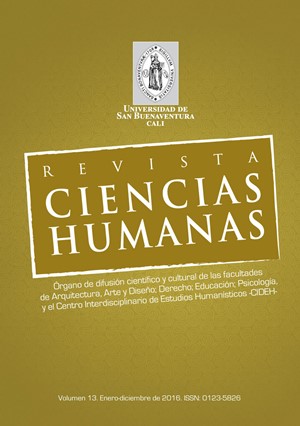The Revista Ciencias Humanas provides open and immediate access to its content, based on the principle of offering the public free access to research to aid in the greater global exchange of knowledge.
Except as otherwise stated, the content of this journal is licensed under a Creative Commons Attribution-NonCommercial-NoDerivatives 4.0 International (CC BY-NC-ND 4.0) license available at http://creativecommons.org/licenses/by-nc-nd/4.0/.
- Attribution. You must give appropriate credit, provide a link to the license, and indicate if changes have been made. You may do so in any reasonable manner, but not in a way that suggests that the licensor endorses you or your use.
- NonCommercial. You may not use the material for commercial purposes.
- NoDerivatives. If you remix, transform, or build upon the material, you may not distribute the modified material.
- No Additional Restrictions. You may not apply legal terms or technological measures that legally restrict others from doing anything the license permits.
Abstract
En su último libro “Arquitectura y Estructuralismo”, publicado en 2015, el arquitecto holandés Herman Hertzberger definió lo que el estructuralismo significa hoy en la arquitectura y su importancia como un pensamiento que brinda oportunidades hacia la reutilización de los edificios. Esta postura da un gran impulso a la discusión acerca de la sostenibilidad de las obras, en tanto abre la posibilidad a los usuarios de tener mayor participación en la configuración de su espacio habitable y, con ello, lograr una arquitectura más democrática. Hertzberger aceptó la solicitud de conversar en su oficina en Amsterdam, y este articulo es el producto de ese encuentro. Escuchar de primera mano sus convicciones y posiciones, reafirma la necesidad de tomar acción y conciencia sobre la urgencia en la concepción de una arquitectura que permita la posibilidad de transformarse y adaptarse a las circunstancias cambiantes de las personas que la habitan, minimizando el desperdicio y el consumo indiscrimidado de los recursos.
References
SAKAIYA Taichi. (1995) .Historia del Futuro. La Sociedad del Conocimiento. Editorial Andrés Bello .355p.
OSORIO, Ximena. Generacion de Valor en la Sociedad del Conocimiento. Tesis de Grado MBA. Universidad del Valle. (2005)
The Obsolescence of the architect superspecialist, Tatjana Schneider, School of Architecture,University of Sheffield.








